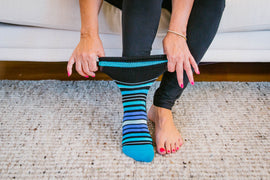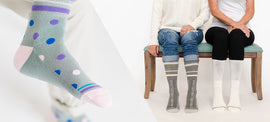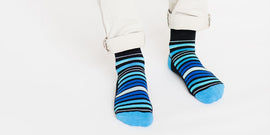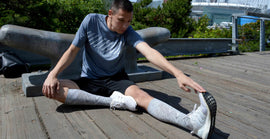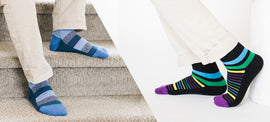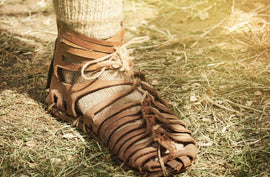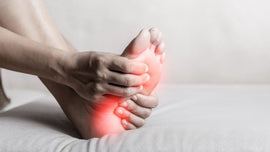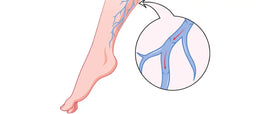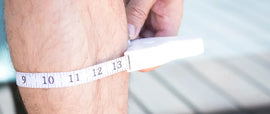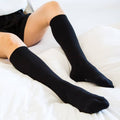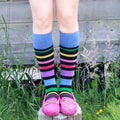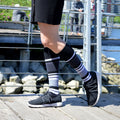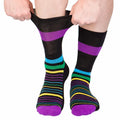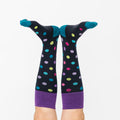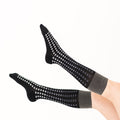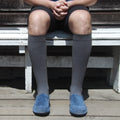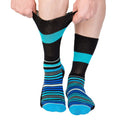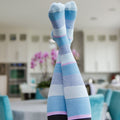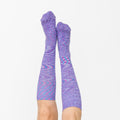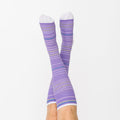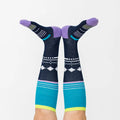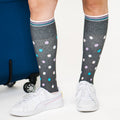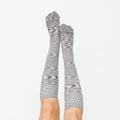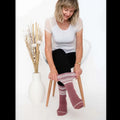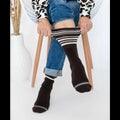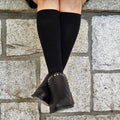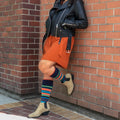Diabetic Socks: What are they and who do they benefit?
Posted by KELSEA FRANZKE

Think diabetic socks are just for diabetics? Think again! Diabetic socks are perfect for people experiencing many different types of foot conditions, as well as anyone searching for an extremely comfortable sock to cozy up in.
Dr. Segal’s has created diabetic socks that have extra cushioning and no seam, which are breathable and non-binding. What’s not to love?
WHAT ARE DIABETIC SOCKS?
While many people with diabetes will wear special diabetic shoes that help protect their feet against certain foot conditions that diabetics are prone to, not everyone considers the importance of the socks they wear. Wearing the proper socks is just as important as wearing the proper footwear when experiencing issues with your feet!
Diabetic socks are specially designed to protect a diabetic foot from developing additional issues. Conditions often experienced by diabetics include neuropathy, foot ulcers, numbness and skin sensitivity due to poor circulation.
Diabetic socks have unique features that typically aren’t present in regular socks, and are specially designed to decrease the risk of foot injury, keep feet dry, and to offer maximum blood flow.
WHAT ARE THE FEATURES OF DIABETIC SOCKS?
Dr. Segal’s has created diabetic socks that are stylish, comfortable and are effective for diabetic and neuropathy patients.
Dr. Segal's diabetic sock features include:
- Non-binding Top Band - The extremely stretchy top band allows for a comfortable fit that doesn’t bunch up and promotes circulation in the feet.
- Seamless Toe - The seam on the inside of regular socks rubs on your toes throughout the day. For someone with diabetes, this can result in painful chafing and blisters. The seamless toe in Dr. Segal’s diabetic socks for women and men works to prevent the development of rubbing and blisters.
- Antimicrobial Treatment - For people who experience foot conditions, it’s important to ensure your feet stay clean. The antimicrobial treatment on Dr. Segal’s diabetic socks prevents bacterial and fungal growth to keep your feet healthy.
- Moisture Wicking - Nobody likes to experience moisture in their socks, let alone diabetics who can develop serious infections on their feet as a result. Having moisture wicking technology in diabetic socks ensures your feet are kept dry to prevent any skin infections from developing.
- Cushioned Footbed - The extra padding on Dr. Segal’s diabetic socks for men and women help prevent injuries on your feet which could result in further complications or infections.
WHO CAN BENEFIT?
With extra cushioning and no seams, breathable and non-binding diabetic socks are great as:
- Diabetic Socks for those requiring special foot care
- Neuropathy Socks for anyone with diminished sensation in their feet or foot sensitivities
- Extra Wide Socks for anyone with wide ankles and calves
- Edema Socks for anyone with foot and ankle swelling that require a non-constricting top band
- Everyday Socks for anyone wanting socks that are extra cozy and comfortable!
DIABETIC FOOT CARE
In addition to wearing diabetic socks, it’s important to also care for your foot health in other ways. Diabetes can cause many complications that affect a person’s circulatory, nervous and immune systems, making diabetics more prone to foot injuries and infection.
The most common complication of diabetes is Diabetic Neuropathy, which damages the nerves of the body. Symptoms include numbness and tingling of extremities, altered pain sensation and reduced ability to feel pain. This can lead to skin damage, infection, foot ulcers and joint deformity. These are usually referred to as Diabetic Foot Syndrome.
When nerve damage is present, it’s common for diabetics to not feel feet problems until they’ve developed. Fortunately, foot care is relatively simple and is key to preventing injury and complications. Here are a few ways to care for your feet:
1. INSPECT FEET DAILY
Perform daily foot examinations to check for any signs of damage including blisters, cuts, bruising, swelling, cracks, changes in colour, hard, or extra-dry skin.
2. KEEP FEET CLEAN
Keep your feet clean and follow a regular foot hygiene routine. This includes washing your feet daily with lukewarm (not hot) water, using talcum powder to keep feet dry, and using a moisturizer on dry skin to prevent cracks.
3. WEAR COMFORTABLE SHOES
Wear footwear that fits comfortably and provides support for your heel, arch and ball of your foot. Avoid tight fitting, high heeled and narrow shoes.
4. WEAR CLEAN, DRY SOCKS
Any socks you wear should have moisture-wicking properties such as cotton and special acrylic fibres (not nylon). Avoid socks with tight elastic bands that reduce circulation, or socks with seams that could irritate your skin. Change your socks daily.
5. DON'T WALK BAREFOOT

As mentioned before, preventing injury is crucial for diabetics. Avoid developing injuries by always wearing shoes or slippers, even around the house.
6. CUT NAILS CAREFULLY
Use extra caution when trimming your toenails, making sure to carefully file away sharp edges. Do not attempt to remove any foot lesions like calluses, corns, bunions or warts by yourself.
It is important to schedule regular foot checkups with your doctor and to contact your doctor if you notice any signs of skin damage. Always consult with your doctor first before making any medical decisions.
TAGS:
SHARE:





